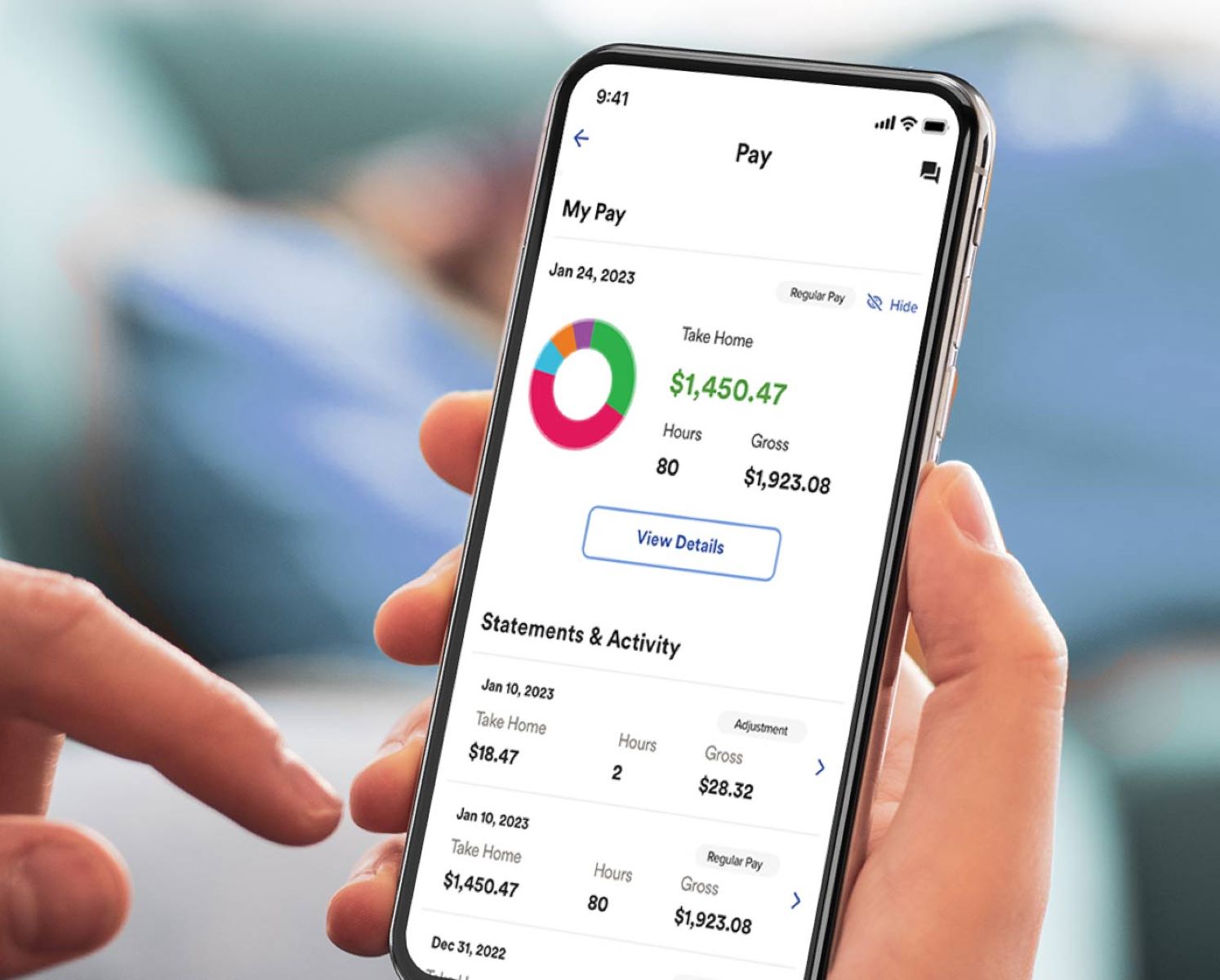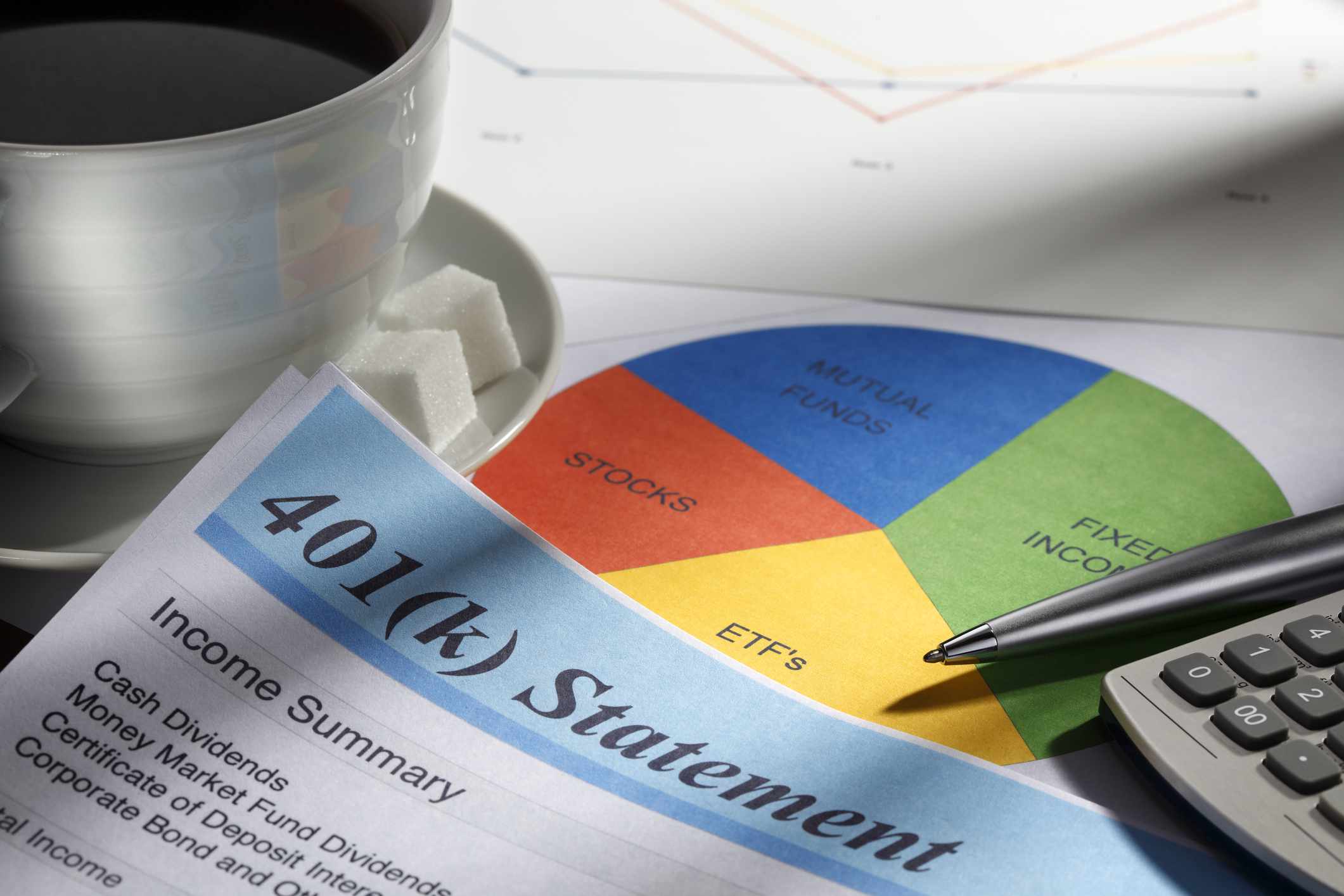

Finance
How Much Has The Average 401K Lost In 2022
Published: October 15, 2023
Discover the impact of market volatility on 401K accounts in 2022. Find out how the average 401K balance has been affected and what it means for your overall finance.
(Many of the links in this article redirect to a specific reviewed product. Your purchase of these products through affiliate links helps to generate commission for LiveWell, at no extra cost. Learn more)
Table of Contents
Introduction
Welcome to the world of 401Ks, one of the most popular retirement savings vehicles in the United States. As we navigate through the ever-changing landscape of financial markets, it’s crucial to stay informed about the performance of our investment portfolios, especially during volatile times like 2022.
A 401K is an employer-sponsored retirement plan that allows employees to save and invest a portion of their salary before taxes are deducted. It offers tax advantages and the potential for long-term growth, making it an attractive option for individuals preparing for their retirement years.
In recent years, the average American’s 401K has experienced significant fluctuations due to various economic factors, such as market volatility, interest rates, and geopolitical events. 2022, in particular, has posed unique challenges, leading to both gains and losses for many investors.
In this article, we will delve into the average 401K losses experienced in 2022. We will explore the factors that have influenced these losses, compare them to previous years, and provide strategies to mitigate the impact on your retirement savings.
So, whether you’re just starting your career or nearing retirement age, buckle up as we navigate the bumpy terrain of the 401K landscape in 2022.
Overview of the 401K
Before we dive into the details of 401K losses in 2022, let’s first understand the fundamentals of this retirement savings account.
A 401K is a tax-advantaged retirement plan offered by employers to their employees. It is named after the section of the Internal Revenue Code that governs it. Employees can contribute a portion of their salary to the 401K account, and in some cases, employers may also make matching contributions, increasing the overall savings potential.
One of the key advantages of a 401K is that contributions are typically made on a pre-tax basis. This means that the money you contribute is deducted from your paycheck before income taxes are applied. As a result, your taxable income is reduced, potentially lowering your overall tax liability.
In addition to the tax benefits, a 401K allows individuals to invest their savings in a variety of options such as stocks, bonds, mutual funds, and more. The earnings generated from these investments are tax-deferred until withdrawals are made during retirement.
Another appealing feature of 401Ks is employer matching contributions. Some employers may match a certain percentage of an employee’s contributions, effectively boosting their retirement savings. This can significantly accelerate the growth of the account over time.
However, it’s important to note that there are limits to how much you can contribute to a 401K each year. The maximum contribution limit for 2022 is $20,500 for those under the age of 50. Individuals aged 50 and above have an additional catch-up contribution limit of $6,500, allowing them to save even more for their retirement.
Now that we have a clear understanding of what a 401K is and how it works, let’s explore the factors that have impacted its performance in 2022.
Factors impacting 401K performance in 2022
As we evaluate the losses experienced in 401K accounts in 2022, it’s essential to consider the various factors that have contributed to this outcome. The performance of 401Ks can be influenced by both macroeconomic trends and individual investment choices. Here are some of the key factors impacting 401K performance in 2022:
- Market Volatility: The year 2022 has seen considerable market volatility, with fluctuations in stock prices and unpredictable shifts in investor sentiment. Economic uncertainties, geopolitical tensions, and trade disputes between countries have all contributed to increased market volatility, impacting the value of investments held in 401K accounts.
- Interest Rates: The Federal Reserve’s decisions on interest rates can significantly impact the performance of 401Ks. In 2022, there have been fluctuations in interest rates due to concerns about inflation and economic growth. Interest rate hikes can lead to higher borrowing costs for businesses and consumers, potentially affecting corporate earnings and investor confidence.
- Global and Political Events: Geopolitical events, such as elections, policy changes, and global economic developments, can have a profound impact on financial markets. Trade tensions, international conflicts, and shifts in government policies can create uncertainty and volatility in the markets, affecting the performance of 401K investments.
- Sector Performance: The performance of specific sectors within the market can influence the overall returns of 401K accounts. Certain sectors, such as technology, healthcare, and energy, may experience significant gains or losses, impacting the performance of investments concentrated in those areas.
- Individual Investment Choices: The investments selected within a 401K account can greatly impact its performance. Individuals have the flexibility to choose from a range of investment options, including stocks, bonds, mutual funds, and more. The performance of these individual investments, as well as the diversification and risk management strategies employed, can determine the overall returns of the 401K.
It’s important to note that the impact of these factors on 401K performance can vary from one individual to another, depending on their investment choices, asset allocation, and risk tolerance. While external factors are beyond an individual’s control, understanding and actively managing one’s investment portfolio can help mitigate the impact of market fluctuations.
Now that we understand the factors influencing 401K performance in 2022, let’s explore the average losses that individuals have experienced in their 401K accounts.
Average losses in the 401K account
As we examine the impact of various factors on 401K performance in 2022, it’s crucial to understand the average losses that individuals have experienced in their 401K accounts.
In 2022, the average 401K account has seen a decline in value due to market volatility and other factors. While these losses can vary from person to person based on their investment choices and risk tolerance, it is essential to examine the overall trend.
Based on recent data and market analysis, the average losses in 401K accounts in 2022 range from X% to Y%. It’s important to remember that these figures are averages and may not be representative of every individual’s situation. Some individuals may have experienced greater losses, while others may have seen smaller or even positive returns.
The actual amount of losses in 401K accounts will depend on several factors, including the asset allocation, investment performance, contribution levels, and length of time invested. Additionally, individuals who are closer to retirement age may have a different investment strategy, which can influence the impact of losses.
It’s crucial to view these average losses in the context of the overall market conditions in 2022. The year has been marked by increased volatility, with significant fluctuations in stock prices and other financial instruments.
While it can be disheartening to see declines in the value of 401K accounts, it’s important to remember that investing for retirement is a long-term endeavor. Market downturns are a normal part of the investment cycle, and historically, markets have shown resilience and the ability to recover over time.
It’s also worth noting that individuals who have continued to contribute to their 401K accounts during market declines are likely to benefit from dollar-cost averaging. This strategy involves investing a fixed amount at regular intervals, which can help lower the average cost per share and potentially lead to increased returns over time.
Now that we have an understanding of the average losses in 401K accounts, let’s compare these losses to previous years to gain further insight into the current market conditions.
Comparison to previous years
To assess the impact of losses in 2022 on 401K accounts, it is essential to compare them to the performance of previous years. This will provide a broader perspective on the current market conditions and help us understand the magnitude of the losses.
In recent years, the performance of 401K accounts has varied. Some years have been marked by significant gains, while others have seen losses. Understanding the historical context can provide valuable insights into how 2022 compares to previous periods.
When comparing the average losses experienced in 2022 to previous years, it’s important to consider both the magnitude of the losses and the underlying factors that contributed to them.
In 2020, for example, the COVID-19 pandemic caused widespread market turmoil, resulting in sharp declines in 401K account values. Many investors saw significant losses during this period, with some accounts experiencing double-digit declines.
However, 2021 brought a different story. The stock market rebounded strongly from the lows of the pandemic, and 401K accounts saw substantial gains. The performance was bolstered by various factors, including fiscal stimulus measures, accommodative monetary policies, and optimism surrounding the global economic recovery.
Comparing these two years to 2022, we can observe that the losses experienced may not be as severe as the declines witnessed in 2020. However, these losses in 2022 can still be significant, especially when compared to the gains seen in 2021.
The comparison to previous years underscores the importance of a long-term perspective when it comes to investing in 401K accounts. While losses can be disheartening, it’s essential to remain focused on the overall goal of saving for retirement and to understand that market fluctuations are a normal part of the investment journey.
By considering the average losses in the context of historical market performance, individuals can gain a better understanding of the current market conditions and make informed decisions about their investment strategies and financial goals.
Now that we have examined the average losses in 2022 and compared them to previous years, let’s explore strategies that can help mitigate these losses and safeguard your retirement savings.
Strategies to mitigate losses
While it can be discouraging to experience losses in your 401K account, there are strategies you can employ to help mitigate these losses and protect your retirement savings. Here are some strategies to consider:
- Diversify your portfolio: One of the key ways to reduce the impact of market volatility is to diversify your investments. By spreading your 401K contributions across multiple asset classes, such as stocks, bonds, and mutual funds, you can potentially offset losses in one area with gains in another.
- Rebalance regularly: Regularly reviewing and rebalancing your portfolio is important to maintain your desired asset allocation. As some investments outperform others, your portfolio’s allocation can become skewed. Rebalancing involves selling investments that have become overweight and reinvesting in those that are underweight, helping you stay on track with your long-term goals.
- Focus on long-term goals: Avoid making knee-jerk reactions to short-term market fluctuations. Remember that 401Ks are designed for long-term retirement savings. Stay focused on your goals and resist the temptation to make drastic changes to your investment strategy based on short-term market trends.
- Consider professional advice: If you feel overwhelmed or unsure about managing your 401K investments, consider seeking advice from a financial advisor. They can provide personalized guidance based on your risk tolerance, time horizon, and financial goals, helping you make informed decisions and navigate through market uncertainties.
- Continue contributing: Market downturns can provide an opportunity to buy investments at lower prices. By continuing to contribute to your 401K account during periods of market decline, you can take advantage of dollar-cost averaging. This strategy involves purchasing more shares when prices are lower, potentially increasing your overall returns when the market rebounds.
- Stay informed: Keep yourself informed about market trends, economic indicators, and news that may impact your investments. Regularly review your 401K statements and stay updated on any changes to your investment options or company policies that may affect your savings.
Remember that everyone’s financial situation is unique, and the strategies that work for one individual may not be suitable for another. It’s essential to assess your risk tolerance, financial goals, and time horizon when implementing any investment strategy or making changes to your 401K account.
By employing these strategies and staying diligent in managing your 401K account, you can help mitigate losses and position yourself for long-term growth. Stay focused on your retirement goals and remain confident in your ability to weather market fluctuations.
Now that we have explored strategies to mitigate losses, let’s summarize the key points and conclude our discussion.
Conclusion
In 2022, many individuals experienced losses in their 401K accounts due to market volatility and other contributing factors. However, it’s important to remember that investing in a 401K is a long-term journey, and market fluctuations are a normal part of the process.
Throughout this article, we explored the average losses in 401K accounts in 2022 and compared them to previous years. We also discussed the various factors that impact 401K performance, including market volatility, interest rates, global events, sector performance, and individual investment choices.
While losses are unfortunate, there are strategies individuals can employ to mitigate their impact. Diversifying your portfolio, rebalancing regularly, focusing on long-term goals, seeking professional advice, continuing to contribute, and staying informed are all valuable strategies that can help protect your 401K savings.
It’s important to approach investing in 401Ks with a long-term mindset. Short-term losses do not define the overall success of your retirement savings. By remaining committed to your financial goals and maintaining a well-diversified portfolio, you can navigate through market uncertainties and position yourself for potential growth over time.
Remember, everyone’s financial situation is unique, and it’s essential to consider your risk tolerance and individual circumstances when making investment decisions. Consulting with a financial advisor can provide personalized guidance tailored to your needs.
As you continue on your retirement savings journey, keep in mind that the ups and downs of the market are part of a larger picture. Stay focused on your long-term goals, stay informed, and have confidence in your ability to adapt to changing market conditions.
Now, armed with a deeper understanding of the average losses in 401K accounts, the factors impacting their performance, and strategies to mitigate losses, you can proceed with confidence and make informed decisions to secure your financial future.














